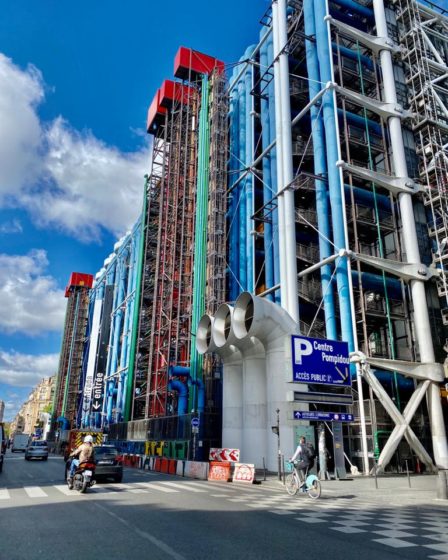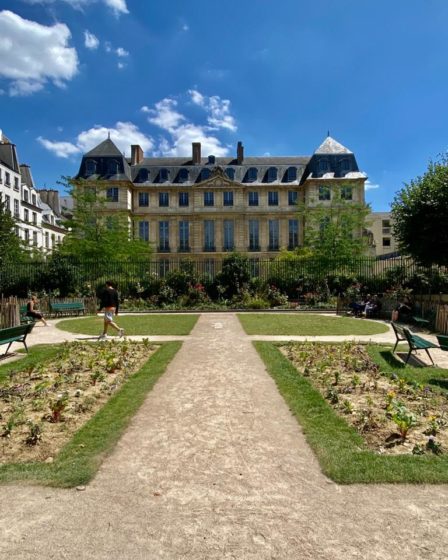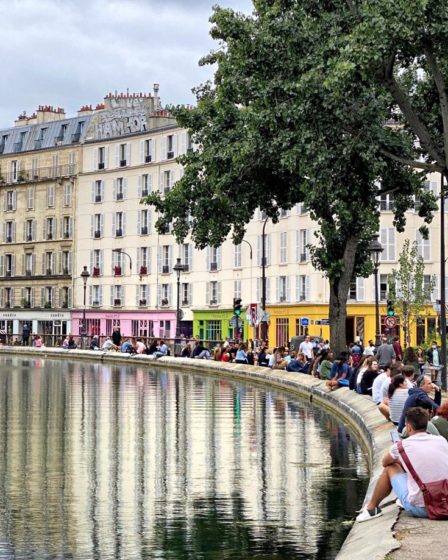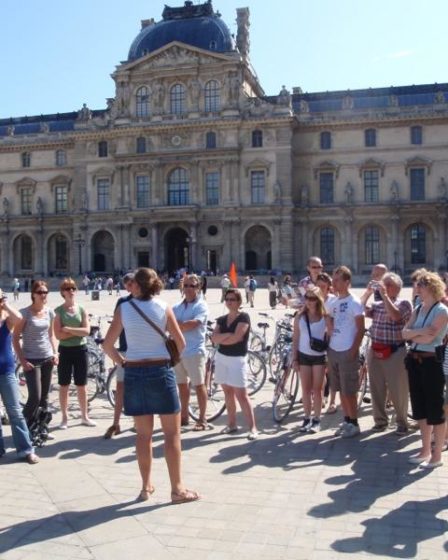A gilded dome, a monumental and marvelous courtyard, canons, a war museum and Napoleon’s tomb – the Invalides has it all. Built as a retirement home for soldiers by the Sun King – including a splendid church to celebrate his victories – it became one of Napoleons favorite Parisian sites: he liked to inspect his troops here. Hardly anywhere else will you encounter this kind of quintessentially French “grandeur”.
Centre Pompidou
An oil refinery, a factory? No, an avant-garde building from the seventies, that serves as a library, exposition room and modern art museum. And those multi-colored tubes? All pipelines for water, electricity and air, which the architects Piano and Rogers chose not to hide behind walls. Instead they enthusiastically hung them on the outside, with a colour code. Don’t forget to watch the nearby and just as colorful Stravinsky fountain!
Musée Picasso
The Spanish Picasso lived in France for his entire adult life, so it’s normal that the most important Picasso museum should be found here. Where else can you track his entire career, from his early beginnings and the blue period, to cubism and his last drawings and sculptures? But let’s not forget his private collection of works of other artists. This is all on display in a gorgeous 17th century city mansion.
Canal Saint-Martin
Paris’ beach… As soon as the sun is out, thousands of people are eating, chatting or simply sunbathing on the banks of this canal, originally created by Napoleon as a drinkwater supply. Nowadays it is one of the hotspots in the city’s hip eastern neighborhoods. Real estate and renting prizes skyrocketed over the last years. Do not forget to visit the trendy restaurants and shops in the surrounding streets.
Chateau de Chantilly
Whipped cream is called Crème de Chantilly in French because, according to a legend, it was invented by a famous 17th century chef who worked here. The castle and the beautiful gardens are well worth a visit, if only for the art collection of the Duke of Orléans, once the owner of the castle. It is nothing less than the largest collection of ancient art in France after the Louvre… The duke was also a horse lover. Here you will find the largest and most magnificent stables of Europe, a horse museum and you can even attend dressage demonstrations.
Notre Dame
Most people did see the terrible fire that raged here on April 15, 2019. Fortunately, the 850-year-old cathedral – the foundation stone was laid in 1163 – was largely spared and only the roof and the spire went up in flames. Napoleon was crowned emperor here, Quasimodo rang the bells. For the time being, the interior is unfortunately inaccessible, but a visit to the outside remains worthwhile thanks to the proliferation of statues of angels, saints and monsters …
Bike Ride
Biking in Paris dangerous ? Not at all! With its 12000 “vélibs” and over 600 miles – and counting – of bike lanes, Paris is quickly becoming the perfect biking city. Instead of traveling from monument to monument through dark metro tunnels, you can visit cosy and village like neighbourhoods like Saint-Germain-des-Près and the Marais, or the trendy “East” around the Canal Saint-Martin. In fact there are plenty of quiet streets everywhere! Biking might well be the best way to discover the city.
Giverny
Monet’s garden is unquestionably one of the most beautiful in the world. Not surprising of this painter who understood the magic power of colours like no one else. In fact he ‘composed’ the garden – located in a charming village 60 miles from Paris – like a painting and he considered it amongst his best works. Visit the romantic house where he lived for 43 years, the endless flower beds and the famous waterlily pond. A true journey into the 19th century…
Arc de triomphe
At first Napoleon wanted a gigantic stone elephant on this spot but he finally opted for a triumphal arch in Roman style. Unfortunately he never saw the result, he died fifteen years before it was completed in 1836. Majestically situated at the end of the Champs-Elysees, on a rather chaotic roundabout, it’s one of the finest monuments – including the Unknown Soldier’s Tomb and the view of the city while standing on top of the Arch.
Sainte Chapelle
A traduire en Anglais : Hier vind je misschien wel de mooiste glas-in-loodramen ter wereld. Gebouwd in recordtempo (tussen 1242 en 1248) door de Heilige Koning Lodewijk IX, deed het tegelijkertijd dienst als reliekkast voor de doornenkroon van Christus – overgekocht van de Byzantijnse keizer – en privékapel voor de koning zelf, rechtstreeks verbonden met zijn paleis via een gang. Tijdgenoten hadden het gevoel het Hemelse Jeruzalem binnen te stappen en het is nog altijd een overdonderende ervaring…









